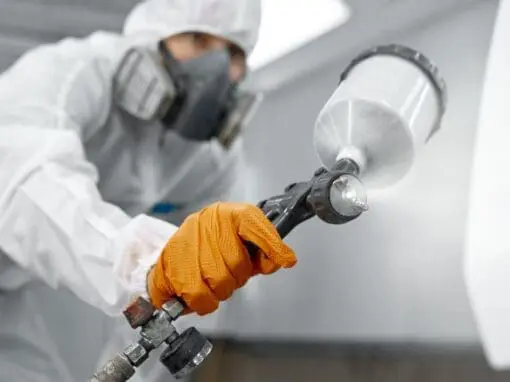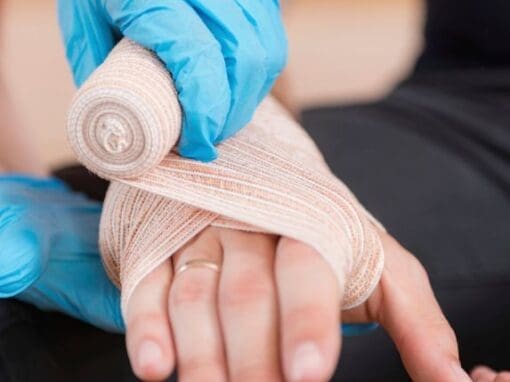What you will learn
This online Health and Safety Training will ensure that you comply with the rules and regulations set to protect everyone in the workplace and avoid any serious incidents.
By the end of the course you will be able to:
- Learn about the various health and safety laws.
- Understand the costs and dangers of poor health and safety in the workplace.
- Know about the most common type of workplace injuries.
- Understand the basics of safety signs and their importance.
- Identify and deal with safety hazards at work responsibly and swiftly.
- Be able to Report Injuries, Diseases and Dangerous Occurrences Regulations (RIDDOR).
- Be aware of the approach to Control of Substances Hazardous to Health (COSHH).
- Have a good understanding of first aid.
- Be able to identify the risks of working at height, fire, electricity, noise and vibrations at work.
Modules
Your Title Goes Here
1. Introduction to Health and Safety Law and Risk Assessments
This module will explain the provisions of the Health and Safety at Work Act 1974 and highlight its significance in ensuring workplace safety. You will gain an understanding of workers’ rights to operate in environments where risks to their health and safety are effectively managed and minimised.
2. Cost of Poor Health and Safety and Reporting of Injuries, Diseases and Dangerous Occurrences Regulations
This module will explore the hidden costs of poor health and safety measures. You will also learn the correct procedures for Reporting Injuries, Diseases and Dangerous Occurrences Regulations (RIDDOR).
3. Slips and Trips
This module looks at the topic of slips and trips as the most common form of workplace injuries. Depending on the workplace and conditions, these minor incidents can sometimes have serious consequences.
4. Control of Substances Hazardous to Health (COSHH)
This module explores the COSHH (Control of Substances Hazardous to Health) advice which instructs employers on managing and reducing the risks associated with hazardous substances.
5. Safety Signs
This module covers important health and safety signs to ensure adherence to safety precautions.
6. Fire Safety
Your workplace should have fire risk assessments that identify potential fire hazards. This module will explain the causes and consequences of fires.
7. First Aid
In this module, you will learn how to use first aid to prevent an injured person’s condition from deteriorating while waiting for assistance. You will also learn how to deal with any immediate dangers and get the right help to manage an incident effectively.
8. Manual Handling
In this module, you’ll learn what to consider in a manual handling risk assessment, including factors such as the working environment, the load, the individual, the task and the equipment.
9. Display Screen Equipment (DSE)
The Health and Safety Regulations of 1992 are for workers who use DSE (Display Screen Equipment) daily. This module will explain the regulations that relate to these workers and how you can follow best practices to maintain safety and wellbeing.
10. Electricity at Work
This module will provide insights into the various injuries that can happen when working with high voltage electricity and how to prevent them.
11. Noise at Work
This module covers the regulations related to working in high-noise environments and provides guidance on the precautions necessary to prevent hearing loss.
12. Work Equipment
Work equipment includes machinery, appliances, tools, installations and any other equipment used in the workplace, whether provided by the employer or by employees for their own use. In this module, you will discover which equipment is covered by regulations and how different types of equipment can lead to different injuries.
13. Working at Heights
In this module, you will gain insight into the various risks associated with working at heights. These risks can range from using a footstool to activities like window cleaning or working in building construction.
14. Vibration
In this module, you will discover how whole-body and hand-arm vibrations can result in serious injuries and the regulations in place to prevent such harm.
Who is this course for?
- Hospitality staff
- Education staff
- Office workers
- Factory workers
- Manufacturing workers
- Retail employees
- Tradespeople
- Healthcare workers
- Care workers
This online Health and Safety Training is suitable for those staff who work in high-risk industries but it also applies to low-risk workers too.
Certification
This online Health and Safety Training is assured by the Royal Society for the Prevention of Accidents (RoSPA) and accredited by The CPD Group.
Upon successful completion of this online course, you’ll be sent a personalised digital certificate as a PDF, enabling you to download and print it.
You can access a copy, reprint or download this certificate on our LMS (Learning Management System). This is your proof that you have been trained in health and safety best practices and achieved compliance. The certificates include a verification number so anybody can authenticate the certificate’s legitimacy.
Our certifications include a renewal date but there is no legal requirement to renew your training and certificate within a specific timeframe. However, we do recommend that you arrange refresher training after 2 years as health and safety guidance does change. You should update your health and safety knowledge and skills regularly.



Genuine reviews
Frequently Asked Questions
Your Title Goes Here
What does a health and safety officer do?
The Health & Safety at Work Act 1974 (HASAWA) mandates that every organisation must designate a responsible person tasked with ensuring a safe working environment and preventing workplace accidents, injuries and work-related illnesses.
These responsible individuals are commonly referred to as health and safety officers, though there is no officially recognised job title for this role. Health and safety officers must possess qualifications and stay updated on the latest health and safety regulations.
Some of their key responsibilities include:
- Ensuring compliance with health and safety regulations.
- Developing, updating and communicating health and safety policies. All businesses with five or more employees must have a written health and safety policy.
- Serving as the primary point of contact for health and safety concerns or enquiries and investigating them.
- Conducting inspections and risk assessments to identify and mitigate hazards.













